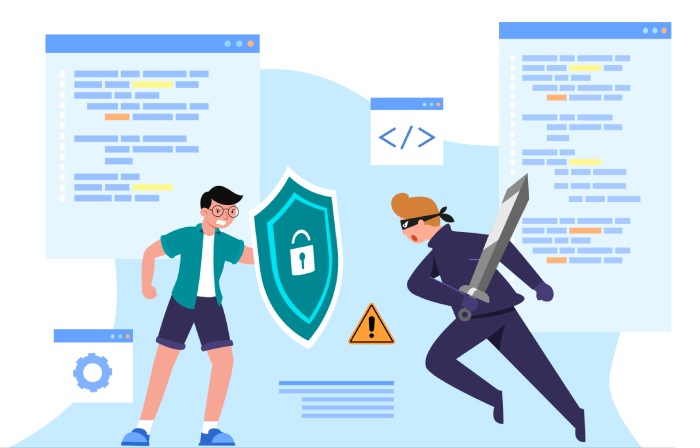Determining DMARC Authentication with Relaxed and Strict Alignment Modes
Now that DMARC implementation has become a norm in 2024, it is important that you understand its nuances to make informed decisions and fortify your organization’s defenses. One of the integral aspects that determine the efficacy of DMARC authentication is choosing the right DMARC alignment mode.
When it comes to DMARC alignment, choosing between relaxed and strict alignment modes is not about merely selecting a technical setting but also shaping the frontline defense of your email ecosystem against spoofing, phishing, and other attacks.
In this article, we’ll take you through the basics of DMARC alignment and its two modes, empowering you to choose the right mode that resonates with your unique security needs and communication practices.
What is DMARC Alignment?
Before we get into the intricacies of DMARC alignment and its modes, let’s cover the basics.
DMARC alignment is a process that ensures the consistency of domains in an email. This involves verifying the domains specified in authentication mechanisms— SPF and DKIM to the one in the email’s “From” header. The verification process serves as a testament to confirming that the emails originate from legitimate sources, ultimately reducing the risk of phishing and other hostile cybersecurity attacks. Moreover, DMARC alignment offers two modes, relaxed and strict, allowing you to tailor your authentication requirements.

How Does SPF & DKIM Alignment Impact DMARC Alignment?
As you know, SPF and DKIM are two essential protocols that form the foundation for DMARC to be effectively deployed, so when it comes to DMARC alignment, the alignment of these protocols serves as a critical component to verify the legitimacy of the sending server.
Not sure how? Let’s break it down for you!
SPF alignment occurs when the domain in the “Return-Path” header matches the domain in the “From” header; meanwhile, DKIM alignment is achieved when the domain in the DKIM signature matches the “From” domain. It is only when the message passes one of these checks it proceeds further for DMARC alignment. That is to say, successful DMARC alignment is contingent on SPF and DKIM alignment to the “From” domain, along with their individual authentication.
However, the SPF and DKIM alignment can become complex in certain cases and ultimately affect DMARC alignment. Issues often arise with the intervention of third-party vendors and forwarded messages. So, the thing is, when you use third-party services to send messages on your behalf, there exists a mismatch between the domain used in the “Return-Path” and the domain in the “From” header, which can lead to legitimate emails failing SPF or DKIM checks. Furthermore, email forwarding can alter the “Return-Path” and disrupt DKIM signatures, causing forwarded messages to fail these alignment checks. Such inconsistencies can lead to legitimate emails being incorrectly marked as spam or not being delivered at all.

What Are the Different Types of DMARC Alignment Modes?
Depending on the level of severity and precision you want for your emails, there are two types of alignment modes that you should know about:
DMARC Relaxed Alignment
If the alignment modes for SPF and DKIM are set to relaxed, it is by default that the DMARC is aligned in the relaxed mode. This means the servers will follow a more lenient approach to matching the domain names specified in the email headers.
When SPF alignment is in relaxed mode, it means that either the “Return-Path” domain or the “From” header domain matches with the domain in the SPF record. As for DKIM, it is considered aligned when signing the domain, and the ‘From’ header domain matches, even in the case of forwarded or modified emails. So, when the header domain aligns with either of the alignment requirements, it passes DMARC authentication and is considered a verified sending domain.
This type of alignment ensures that the email authentication process is robust yet adaptable to the variations often seen in legitimate email-sending practices.

DMARC Strict Alignment
Strict alignment, as the name suggests, leaves no room for discrepancies when it comes to matching domains in the email’s “From” header and the domains used in SPF and DKIM authentication. This means that for SPF to be aligned, the “Return-Path” domain must exactly match the “From” header domain, and for DKIM, the signature should be exactly the same as the “From” header domain. Once either of the two alignments is passed, DMARC alignment is passed.
This alignment mode offers heightened security, significantly reducing the risk of email spoofing and phishing by allowing only emails from fully authorized domains.
Which One Should You Choose?
Let us admit that choosing between the two alignment modes is no cakewalk. With alignment mode having its own set of pros and cons, making this choice in isolation would mean shooting the shot in the dark. That is to say, it is imperative to take into account various factors, such as your organization’s specific needs, risk tolerance, email infrastructure, etc. when making a choice.
For instance, if security is your primary concern and your email environment is tightly controlled, Strict alignment is a viable option. However, if you’re worried that your legitimate emails might end up in the spam folders of the recipients or employ multiple subdomains, you might want to choose a more forgiving approach— the relaxed mode.
What if DMARC Alignment Fails?
If DMARC alignment fails, it often means that neither SPF nor DKIM were aligned. Consider this a good sign if you weren’t the sender of the email and had set the DMARC policy to quarantine or reject, as you spared yourself from getting spoofed. However, if you were the sender, yet DMARC alignment failed, your authentication policies are probably incorrectly configured. This requires immediate attention as it can negatively impact your email delivery and taint your brand reputation.
Ensuring proper DMARC alignment is critical to navigating the complexities of email authentication and ensuring that your organization’s communication channels are secure and trustworthy. Whether you opt for flexibility (with relaxed mode) or precision (with strict mode), the primary objective remains the same— to fortify your defenses and maintain the integrity of the communication ecosystem in this complex digital landscape.
Need help to authenticate and align DMARC for your domain? Speak to one of our experts at DMARCReport today!







